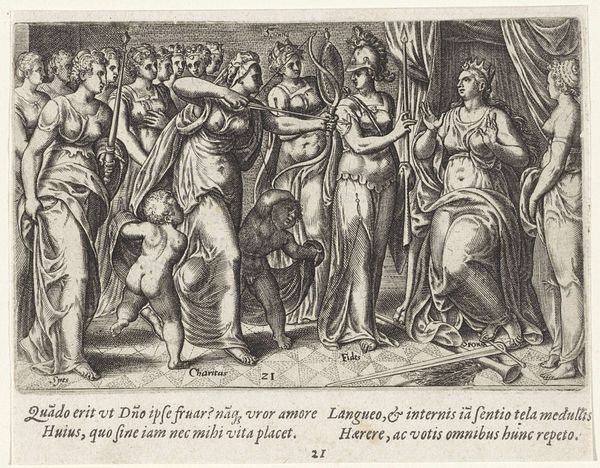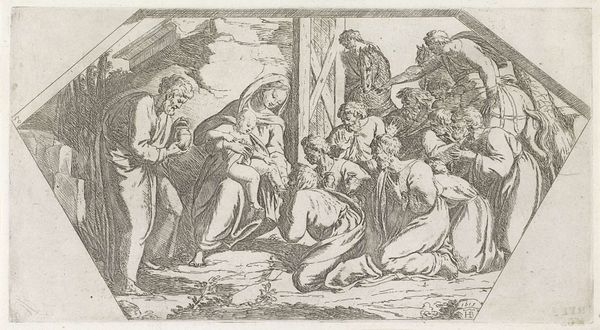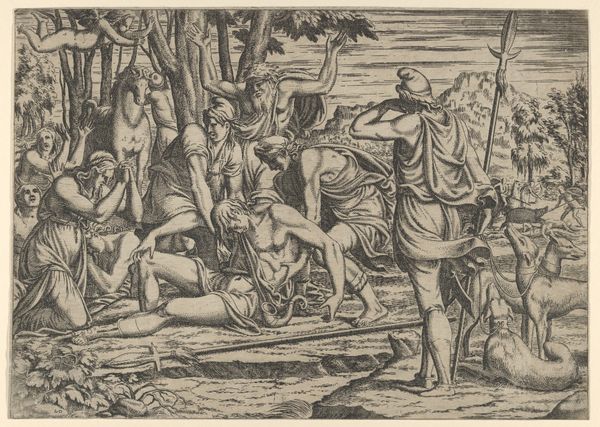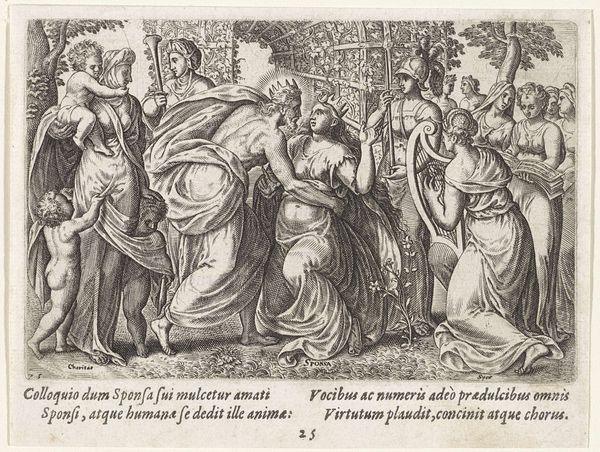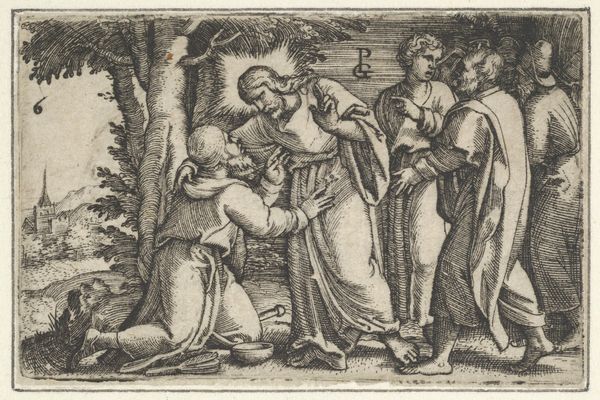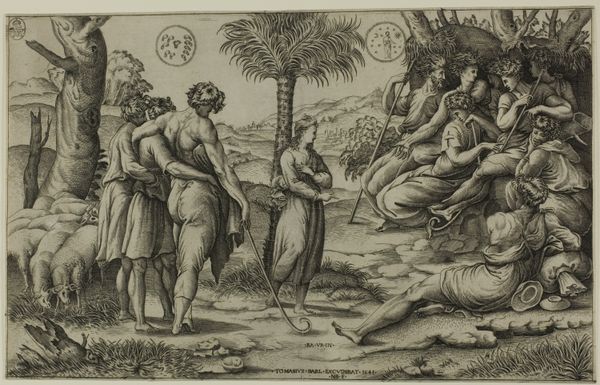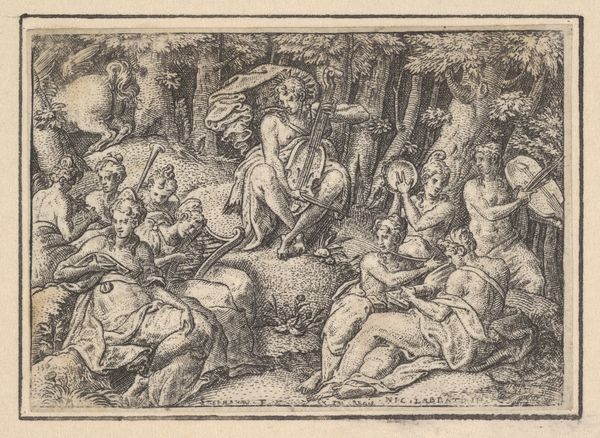
Dimensions: height 92 mm, width 140 mm
Copyright: Rijks Museum: Open Domain
This engraving, Bruid knielt voor de koning, was made by Wierix around the turn of the 17th century. It's a print, meaning that multiple impressions could be pulled from a single worked plate, in this case made of copper. Consider the amount of labor involved in the production of an image like this. The original design would have to be carefully cut into the metal, line by painstaking line, using specialized tools called burins. The fineness of the detail is remarkable, especially given the miniature scale of the image. Each impression would be identical to the others, offering a consistent visual message. Prints like this had a social purpose. They were often devotional in nature, and relatively inexpensive, meaning that they could spread ideas widely among a population, in a way paintings and sculptures never could. In this way, the material and means of production are completely inseparable from the image's function. It’s a powerful reminder that even the most rarefied-seeming imagery is, in fact, profoundly connected to everyday life.
Comments
No comments
Be the first to comment and join the conversation on the ultimate creative platform.

